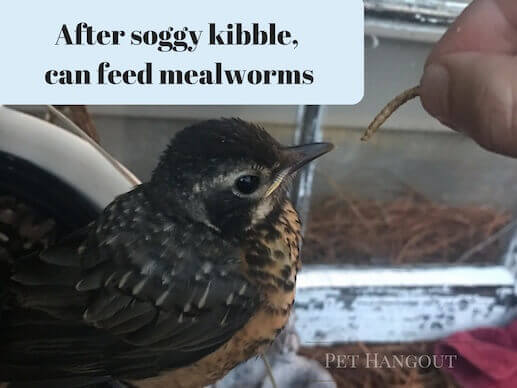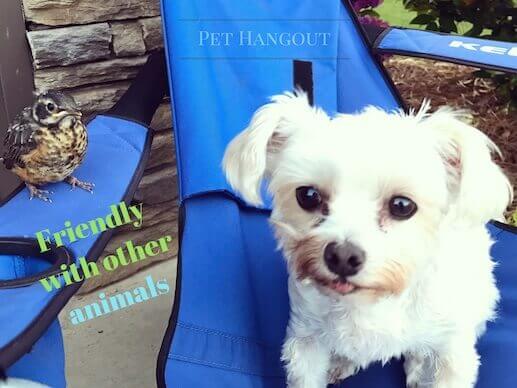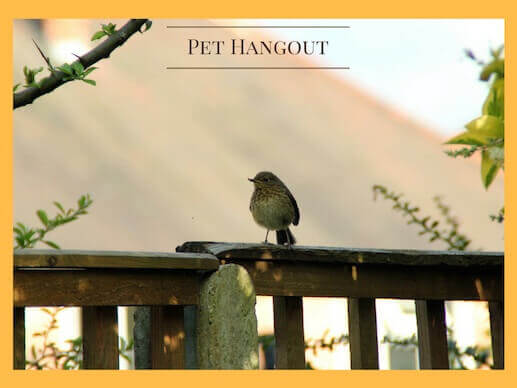Your shopping cart is empty!
Thanks for this post, Pet Hangout. This is very helpful to know if I ever have to take care of a lost bird.

Have you found a baby bird that needs your help?
I’m sure you have a lot of questions soaring through your mind like:
My heart hurts along with you if you have found a lost baby bird. Your instinct immediately tells you this bird needs your help. Then, thoughts begin racing through your mind as to how in the world you can pull this off!
The very 1st thing you should do is verify the following:
1. The bird is indeed a baby in need of your help. Some species of birds kick their babies out to teach them how to fly. I know, it sounds mean but I guess it’s a type of ‘tough love’. If this is the case, then the bird will have developed wings AND the Mom will be close by supervising. If you see this, you should leave the bird alone and let the Mother do her job.
2. You cannot locate their nest OR cannot safely return the bird to its nest. Again, make sure Mom is not trying to teach the baby to fly. It would be tragic to interfere with this process.

Once you feel confident that the baby needs you, go ahead and collect a few things:
If you have a very young baby, he will sleep most of the time and just wake for feedings. Place the natural material in the bottom of the shoebox and place your new baby on top. This will make him feel right at home.

In the beginning, your new found baby is going to want to eat often - as in every 2 - 3 hours. Drop the kibble into a small cup of water and let it soften. You want the food to take on the consistency of mush. This most closely emulates the mother bird’s regurgitation of food to feed her young. Once very soft and moistened, take a tiny bit and place between the tip of the tweezer. Baby will instinctually open his mouth and make a very high pitch and fast chirping sound. Stick the tweezers inside his mouth (past the tip of his beak) and drop the food in. Baby will gobble right up. Continue to do this until baby appears to be getting sleepy and/or stops opening his beak. It will not take very long to fill a newborn up.

Just like human babies, he is just going to eat and sleep at first. You will see big changes daily in his appearance and development of feathers. At first, he will look like a little punk rocker with fuzz sticking out. Then, the feathers will start taking shape and his beauty will start showing itself.
Let your baby guide you on how often to feed and how much. You will start to see that he wants to eat more food but less often. This is good for you. You will eventually be able to return to a normal night and get your sleep again!

As far as the shoebox bed, you will see the bird begin to jump and flap his wings a bit - he will eventually jump out. You will need to create a larger area for him to exist. You could use a regular bird cage or create a boundary on the floor. Using a wired playpen with a sheet or cloth over the top ensures your baby doesn’t take flight over areas that you want to keep clear of bird poopie. Larger plants are also a great idea to surround him with. Also, you should try to keep the baby outside (in a protected area like a screen porch) instead of bringing indoors to your climate. Remember, he was outside before and prefers this. If ultra young, keep warm by placing stuffed animals around him. This simulates being in the nest with his siblings.

It will be important for him to transition from being hand fed to picking up his own food. Begin to encourage this behavior by providing the moistened kibble in a shallow bowl. Place it in his living quarters. Also, create a makeshift birdbath. A small bowl should work just fine. You will see that he loves to get in and flap around and drink up the water. It will only be a matter of time before he discovers the food on his own and begins to eat all by himself.
Once he is taking the initiative to eat, begin the transition to real bird food! You can buy dried mealworms at most stores that carry bird feeders and birdhouses. Place some in the area close to his water to entice him to partake. You may also want to introduce them to him still using the tweezers.

As he begins to learn to fly, he will start taking flight more and more. You might see him want to fly to you, land on your shoulder, head, or hand. Interact with your bird and enjoy this special time. He will soon want to return to the trees and sky. However, while he is still with you, he will also start warming up to others as well.



Of course, as much as this precious little birdie has your heart now, your goal should be to get him totally independent so that he can live a free life in nature. When he is flying great to you, begin taking him outside to introduce him to the trees and grass. You might place him on a branch or let him walk in the yard a bit. Do this is slow increments and always let him return to the safety of his domain while he is learning the new surroundings.

The advancements in independence are very fast. Each day will bring brand new discoveries for your little bird. Set up an area outside with water, shelter, and food once you feel your bird is ready. Begin letting him hang out in this area during the day and observe. Eventually, he will begin to fly further away in the yard and discover trees! Once he is doing this, it will not be long until he discovers others that are just like him! This will be a glorious feeling for your little bird. Feel proud, not sad, for your baby that is ready to fly the coup.
Yes, it will be bittersweet when he flies away. But look at it this way - You got to experience life with a wild bird for a little bit of time. How awesome is that? Not everyone can say such a thing. Love him like crazy and watch him flourish.
Wasn't that why you picked him up in the 1st place - to help him learn to fly?

If you enjoyed this post, Pet Hangout thinks you might like our K9's in Flight read, our thought-provoking post on animal abuse or learning How The Sneaky Killdeer Protects their Nest.
Have you ever found a baby bird in need?
Did you enjoy this post?
Share what's on your mind with us below ~ ~
...and would you be a "cool bird" & click our LIKE box?
In the mood for a FREE Pet Grooming Glove today? Check out how to claim yours!
Thanks for this post, Pet Hangout. This is very helpful to know if I ever have to take care of a lost bird.
Though the intentions of this post are great, a good deal of this is wrong. In fact, it never even mentions how caring for most wild birds is illegal under the Migratory Birds Act. If you find any injured/lost baby bird, you should contact a DNR certified rehabilitation facility near you. They will take care of the bird properly and ensure that it is able to be released as naturally as possible.
Hi Austin,Thanks so much for your comment about the Migratory Bird Treaty Act of 1918. I think it is important to interpret the overall intention of this act. In part, the act states, "The statute makes it unlawful without a waiver to pursue, hunt, take, capture, kill, or sell birds listed therein as migratory birds. The Migratory Bird Treaty Act of 1918 prohibits the removal of all listed species or their parts (feathers, eggs, nests, etc.) from such property."So I think you would agree the goal is to protect migratory birds and to not harm them or use their parts for financial gain.The bird documented in this post was in need of intervention. The bird was not hunted or sought out but found and remained on the same property. It was not removed from the property in which it was found. The girl that helped the bird merely provided shelter, food, and water until it was able to fly again. Her intention was to help, and not to harm in any way.I would also highlight that as the bird healed, he was able to freely perch on a tree limb without any restrictions around him on the same property. There was a natural progression back to his native surroundings and eventually, he took full flight.I hope you can see the stark differences between the basis of protecting all migratory birds and the intentions of this post and the girl that assisted him back to his native surroundings.Warm Regards and thanks for reading The Tale Wagger! The Pet Hangout Team
uh oh, we got a fledgling in need help what to dooooooo???https://mail.google.com/mail/u/0?ui=2&ik=32296e22d9&attid=0.1&permmsgid=msg-a:r1737259402278346491&th=17cea149351c3ce2&view=fimg&fur=ip&sz=s0-l75-ft&attbid=ANGjdJ_eAwyMtt-1pUBl7Co2-rprhQEu65Sgjh6-UKmOD3aw7v18vm95tS8AZAYDc3KYAu7iPO-gVEnbMtGUoOKAhAlTvtaqBMuzN5bTMKFj41N_2UVwlVaDIshbEvw&disp=emb&realattid=17cea14866ddc9287551
I just now noticed this baby American Robin on my step latter, outside in my yard. I noticed it wouldn't move nor would it chirp when I was near at first notice.. I wasn't sure what to think; if the poor thing was hurt or just hanging out and waiting for Mom. I then noticed baby turning his head away from me!!!! Like it trusted me, because I was close enough to lure mom to baby with a piece a bread that I had just gotten to feed my abundance of birds I have in my yard.. I heard an off chirp from a huge bush I have. And this baby bird stood up tall with a the sweetest chirp back to mom. Them I knew for sure mom was waiting for me to move my behind to rescue her young. Sure enough minutes later. When I looked out the baby robin and the piece of bread was gone. God is so good. Happy bird watching.